When you hear the words white coffee, you might think of the flat white drink or coffee with milk. If so, you’d be surprised to learn that neither of those is truly considered white coffee.
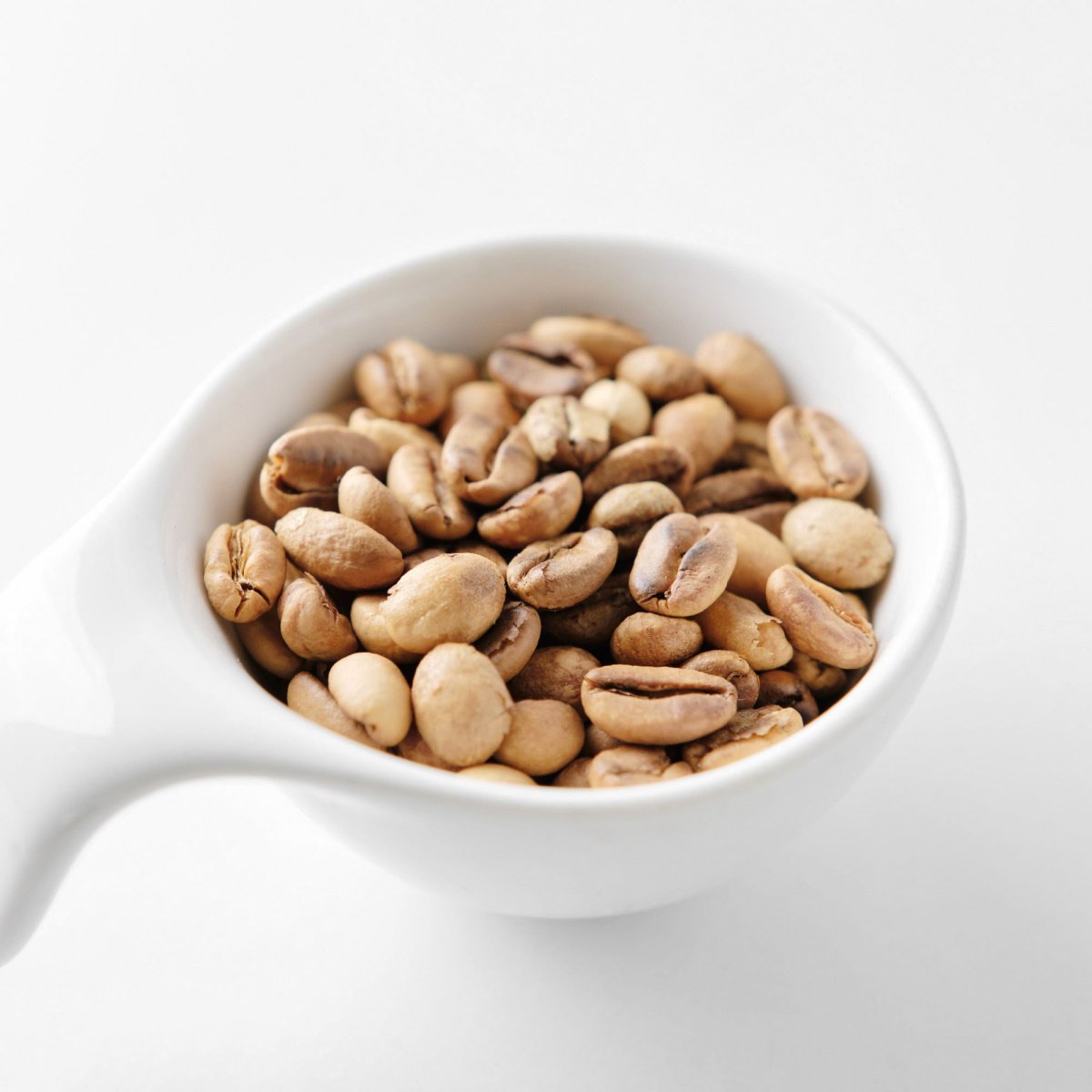
White coffee is a coffee bean that has been lightly roasted at a lower temperature than traditional roasts. The difference in caffeine content is negligible, but white coffee may have more health benefits than other roasts.
This article will do a deep dive into what white coffee means and how it compares to other roasts. By the end of the article, you can decide if your next bag of beans should be white.
Table of Contents
- What Exactly is White Coffee?
- How Was White Coffee Developed?
- White Coffee vs Black Coffee
- Is White Coffee Healthy?
- Does White Coffee Have More Caffeine?
- How Much Caffeine is in White Coffee?
- White Coffee vs Blonde Roast
- White Coffee at Starbucks
- White Coffee at Dutch Bros
- White Coffee Options for Home
- Final Thoughts
What Exactly is White Coffee?
With a name like white coffee, it’s easy to see why most people assume it means coffee with milk or the well-known flat white drink. But white coffee is anything but white.
White coffee is simply a bean that has been roasted for less time than most medium or dark roasts. It is also roasted at a lower temperature than those other roasts.
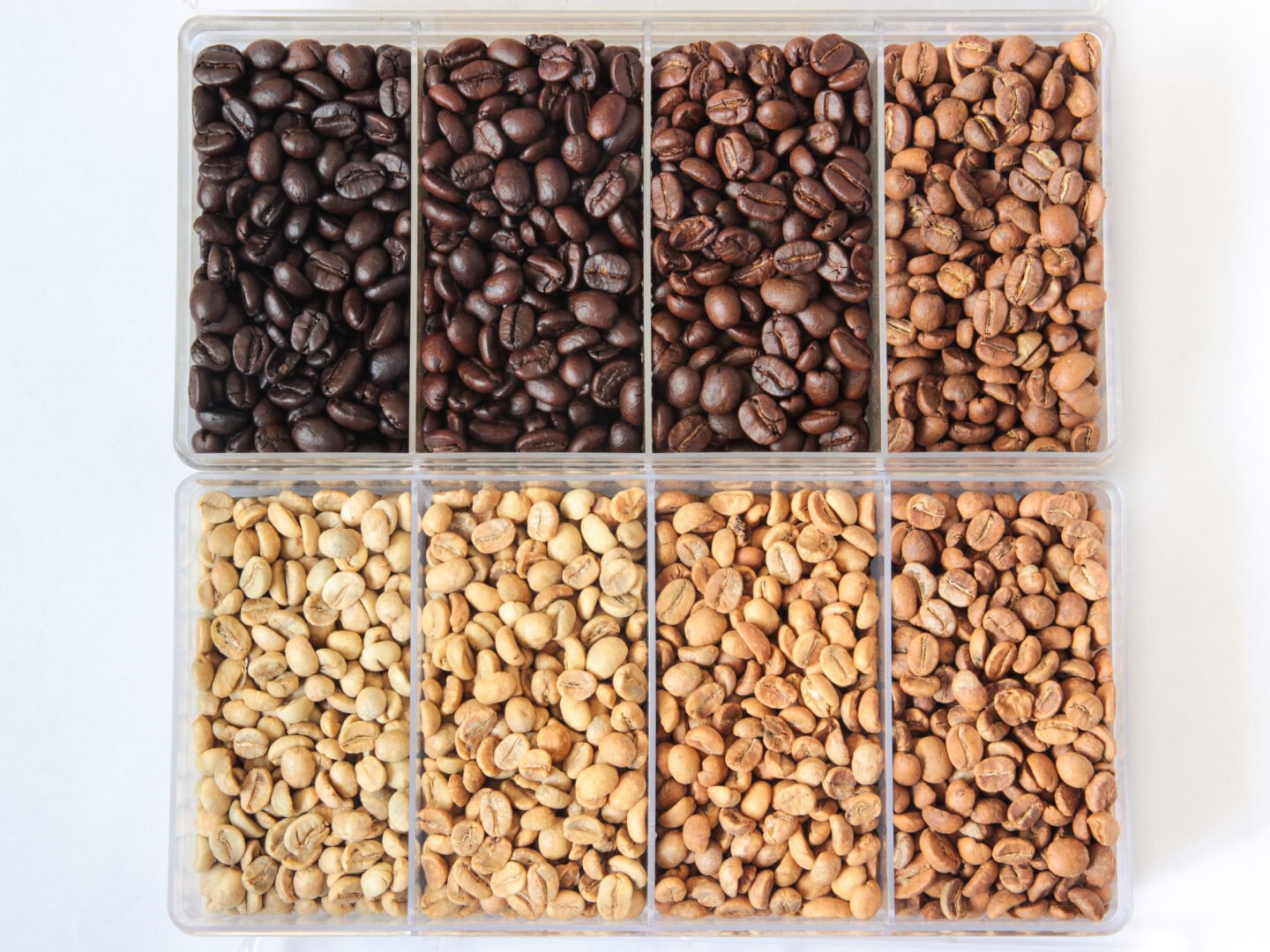
Traditional medium and dark roasts are usually roasted somewhere between 450 and 480 degrees Fahrenheit. White coffee is generally roasted at around 325 degrees Fahrenheit.
Unfortunately, there is no specific consensus on how long white coffee is roasted. The lack of specific details regarding roasting that many coffee companies conceal makes it difficult to define what constitutes white coffee.
How Was White Coffee Developed?
White coffee is relatively new to us in the Western world, but it’s actually been around for centuries in other parts of the world.
Its creation is primarily attributed to the country of Yemen, which is in the Middle East. They are the first documented country to roast beans lightly at lower temperatures, but they also typically add a spice called hawaij to their white coffee.
Since then, many countries have adopted the roast around the world. But often, other countries have added milk or some variation of cream to the white coffee brew, making it truly white in color.
You’re probably starting to see why so many people are confused about what white coffee is. There is significant variation in the terminology used surrounding white coffee between countries.
White Coffee vs Black Coffee
The main difference between white coffee and black coffee is simply how long the bean was roasted. Black coffees are typically considered medium to dark roasts, whereas white coffee is a much lighter roast.
Based on the roast, many people will report a distinct difference in taste between white and black coffee.
People often describe white coffee as nuttier and sometimes sweeter. Black coffee tends to give you more of the bold and traditional taste of coffee you may be accustomed to.
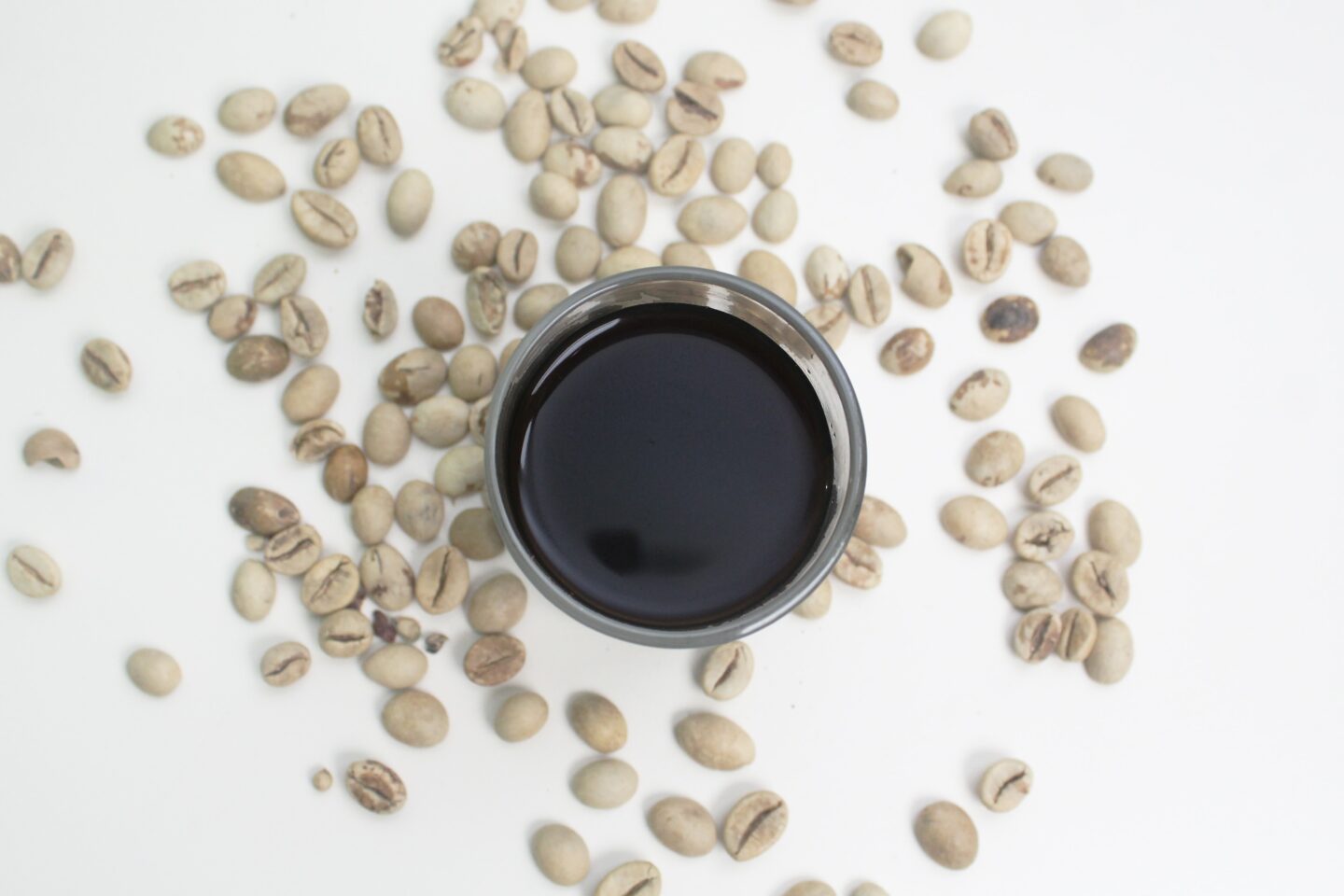
When it comes to drinking both types of coffee “black,” you won’t notice a difference in the color of the coffee. They will both be that dark brown color you’d expect coffee to be.
Is White Coffee Healthy?
Now that you know what white coffee is, you might wonder if it’s healthier than other coffees.
There is some evidence that white coffee could potentially be healthier for you. The reason is that because the beans are roasted for less time, they lose less chlorogenic acid.
Chlorogenic acid is an acid in coffee that research associates with reducing your risk for diabetes, obesity, cancer, and inflammation. Given all these positive health benefits, it makes sense that the more of this acid that’s present in your coffee, the healthier it may be for you.
While white coffee may maintain more chlorogenic acid, research has shown that roasting doesn’t actually impact the antioxidant content of your coffee. So claims that white coffee is richer in antioxidants aren’t necessarily true.
Overall, white coffee may be slightly healthier for you. But there’s not enough evidence yet to strongly associate it with major health benefits compared to other roasts.
Does White Coffee Have More Caffeine?
The answer to this question is sort of. One big myth surrounding white coffee is that it’s significantly more caffeinated than other roasts.
People assume it will lose less caffeine content because it's roasted less. They are right that this is why white coffee has more caffeine.
Where this myth goes wrong is that research shows the amount of caffeine lost with more roasting is only 5.4%. This amount of difference in caffeine would go unnoticed by most of us coffee lovers.
So yes, white coffee has more caffeine. But you might be disappointed if you’re looking for a caffeine buzz beyond your standard coffee.
How Much Caffeine is in White Coffee?
Don’t get annoyed, but this is yet another not-so-straightforward answer. The amount of caffeine in white coffee will not be standard.
Because we know the roasting process doesn’t actually significantly impact caffeine content, the amount of caffeine will depend more on how the coffee was brewed and what type of bean is used.
One study did show that lighter roasts contained about 60 milligrams of caffeine per eight-ounce cup, whereas darker roasts contained about 51 milligrams. Keep in mind this study didn’t specifically denote they used white coffee.
It’s probably safe to assume that white coffee will have similar levels of caffeine as typical coffee. So if you’re interested in getting more caffeine per cup, pay more attention to how it's brewed or the bean type.
White Coffee vs Blonde Roast
The main difference between white coffee and blonde roast is, once again, the roast time. White coffee should be roasted for even less time and at a lower temperature than a blonde roast.
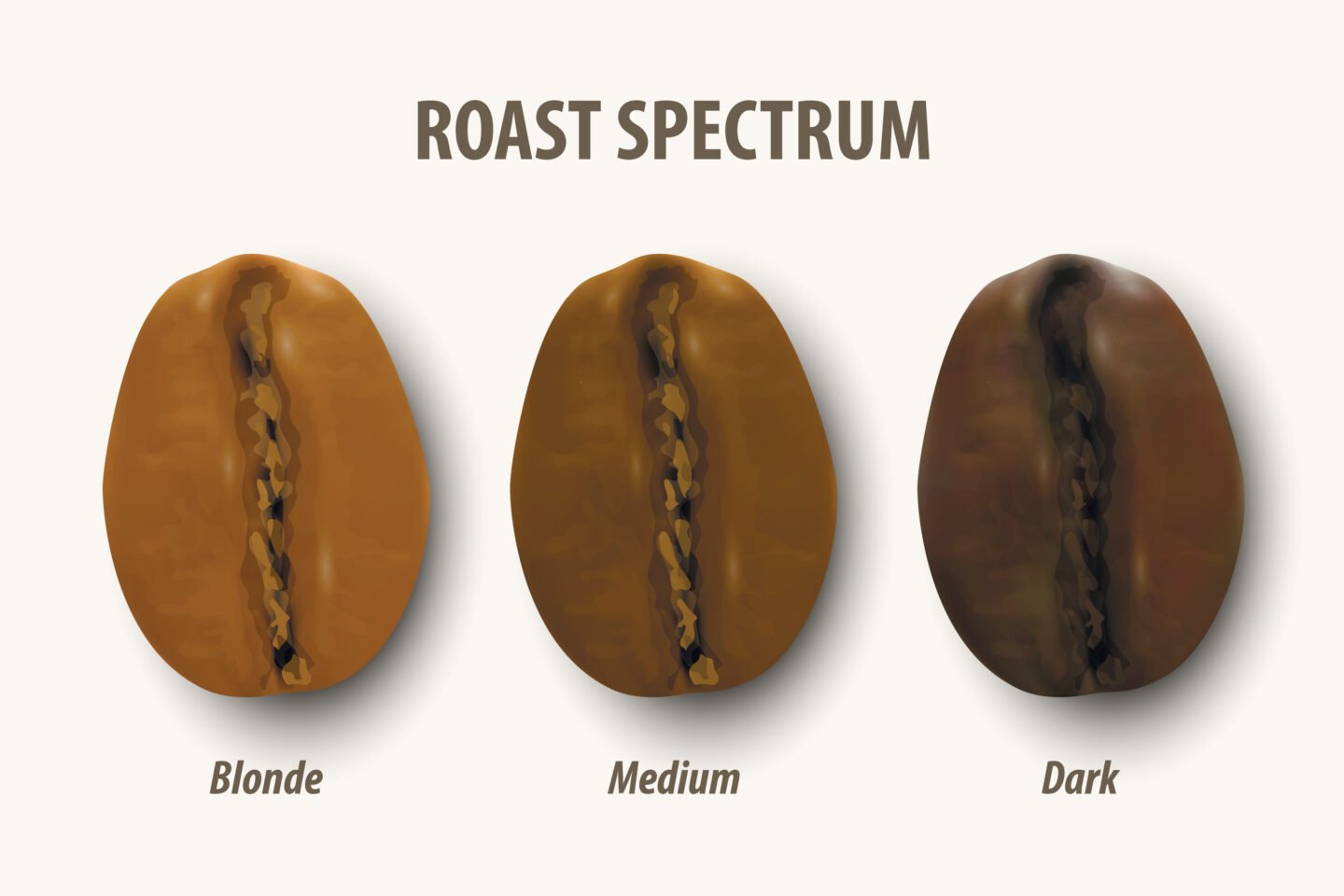
This comparison is not as straightforward as you think because the coffee industry has not developed hard cutoffs for what constitutes a white coffee and a blonde coffee. The temperature at which they are roasted and the duration they are roasted could potentially be very similar.
Because companies don’t have to disclose this, they could be marketing the same beans as a blonde roast and white coffee without you knowing the difference.
However, coffee connoisseurs do report they can taste a difference. Generally, the white coffee will taste nuttier, whereas the blonde roast will taste more sour and tangy.
White Coffee at Starbucks
Many sources will tell you that Starbucks serves white coffee. But they really mean that Starbucks has flat whites or coffee with milk or cream added.
It’s common for people to mistake a flat white coffee for white coffee.
But a flat white is an espresso drink typically made with microfoam, a form of steamed milk. Once again, white coffee refers to a roast of coffee that is particularly light.
Starbucks offers a blonde roast option but does not designate any specific white coffee roasts on its menu at this time.
White Coffee at Dutch Bros
You might assume that because Starbucks doesn’t have white coffee, Dutch Bros won’t either. But surprisingly, you would be wrong.
Dutch Bros does offer a true white coffee. They take green coffee beans and lightly roast them to create their white espresso beans.
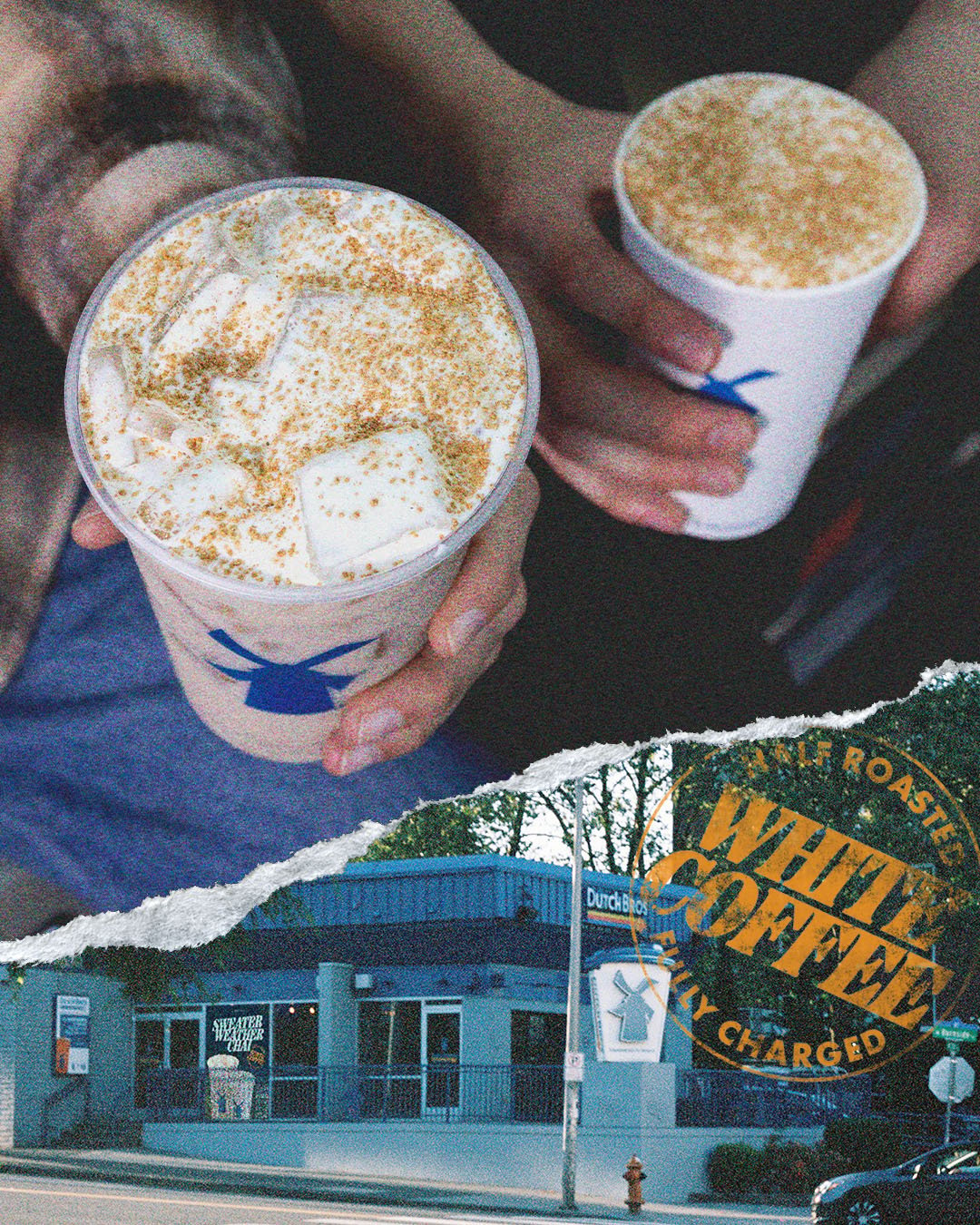
You have to be mindful not to mix this up with several of the drinks at Dutch Bros that may have the word white in them. Many of these drinks just mean that the drink contains dairy or some form of creamer.
If you’re confused about whether or not the drink you’re interested in contains true white coffee, just ask the barista. Because nothing is worse than getting a super milky coffee drink when that’s not what you had in mind.
White Coffee Options for Home
If you want to try a cup after all this talk about white coffee, don’t worry—we’ve got you covered. Here are some options you can easily purchase online to bring the white coffee to you.
White Tornado is a popular brand that provides an espresso blend to help you make a tasty white coffee latte from the comfort of your home.
Another option is Wiley’s Wired White Coffee, which comes to you straight from the roasters and is known for its nutty flavor.
Since white coffee is growing in popularity, you may also be able to ask your local coffee shop if they sell any white coffee grounds.
After a few cups at home, you may just find that you enjoy the nutty taste white coffee offers compared to other roasts.
Final Thoughts
White coffee isn’t a flat white, and it’s not coffee with milk in it, either. It’s simply a coffee bean that’s been roasted very lightly at a lower temperature than other roasts.
Despite myths surrounding white coffee, it only contains about 5.4% more caffeine than other roasts. However, because it loses less chlorogenic acid in the roasting process it may be a slightly healthier coffee option than other roasts.
The amount of caffeine in your white coffee will largely depend on how it's brewed and what type of bean you use to make the coffee.
Starbucks doesn’t offer true white coffee at this time. On the other hand, Dutch Bros offers white coffee espresso options, but you may need to ask the barista for clarification as the drink names can confuse you.

Leave a Reply